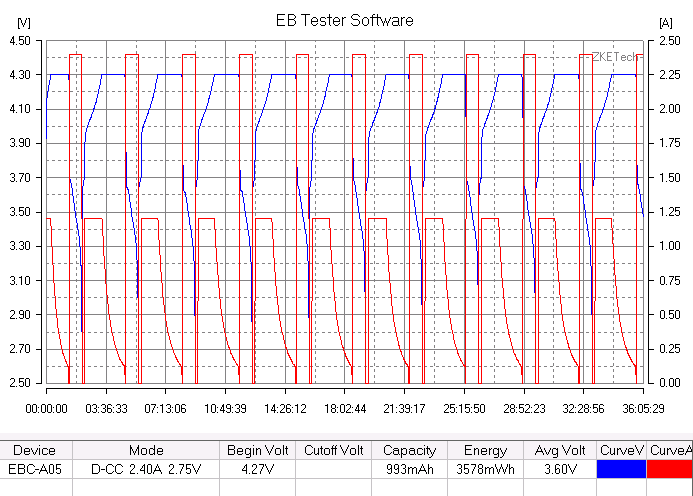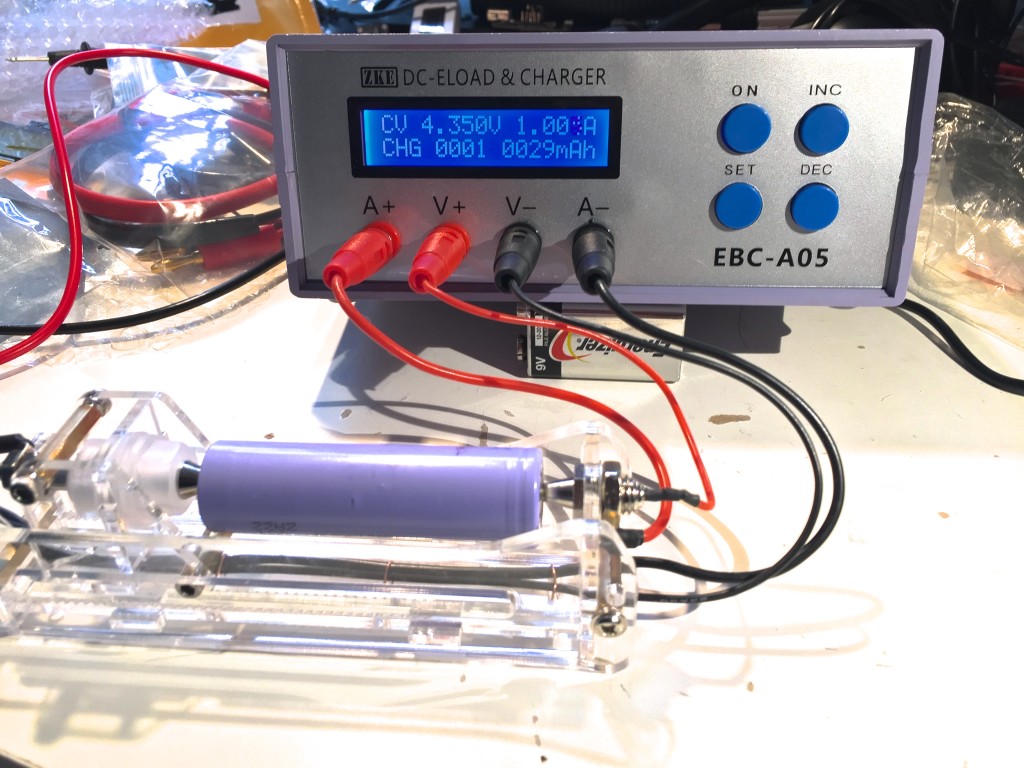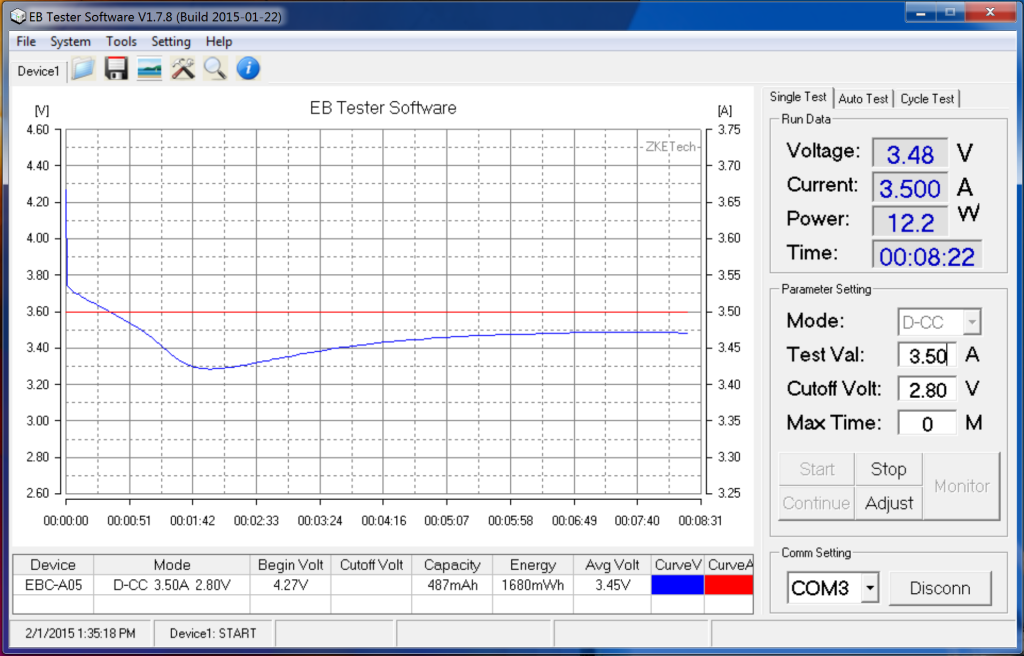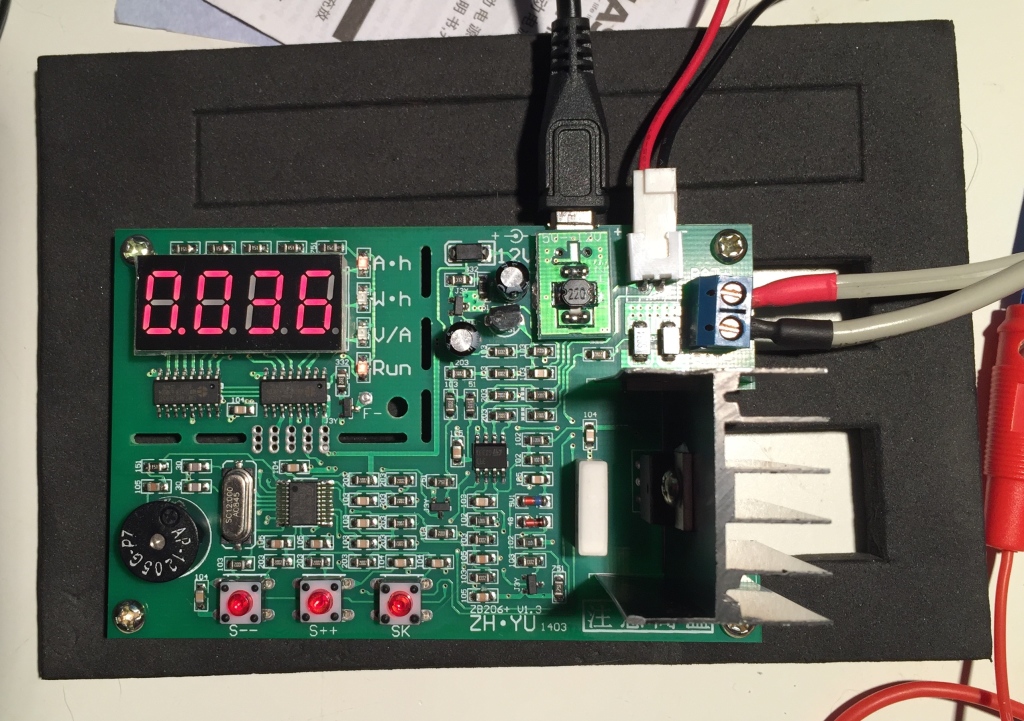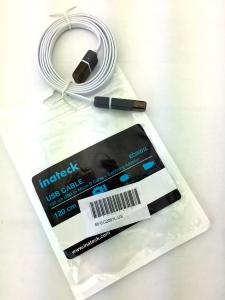Last week I reported that I’d noticed an anomaly while running my new ZKE EBC-AO5 through repeated tests using the cycle-test feature of its accompanying PC software. I’ve since identified the likely cause, along with a workaround, and I’m expecting a firmware fix soon from the manufacturer.
The problem can be seen in this chart.
The charge phase is supposed to terminate when the current, shown in red, hits 0.12 A. Instead, it terminates at ~0.25A in the first cycle, and at ~0.5A in subsequent cycles.
I realized that the subsequent cycles were also terminating at about 90 minutes, which stood out, because I’d set a 90 minute timer for terminating the discharge phase if the voltage didn’t drop below a threshold first. A check of the raw data showed that the termination happened at ~88 minutes.
The device doesn’t allow a timer to be set during the charging phase, but I hypothesized that the timer from the previous discharge phase was somehow being utilized during the charging phase. I tried shortening and lengthening the discharge timer and found that, as I expected, it had a corresponding impact on the length of the charging cycle.
So, the workaround is to either omit the timer on the discharge phase, or set it to a duration larger than the time required to achieve a full charge for the cell under test. I’ve successfully run dozens of cycles now:
I also reported my findings to ZKE, using their published email address and received a reply thanking me for the report and letting me know that they would have an updated firmware by the end of the month.
